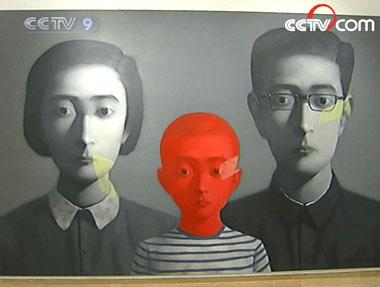
The exhibition shows three of the most prominent representatives of this modern "converted realism."(Photo: CCTV.com)
Realistic depictions are commonly found throughout the history of Chinese art. Still, each era has its own perspective. The interpretations and transformations of reality, reveal social and political changes in China over time.
During the 1980's, one group of burgeoning artists became among the first to meld artistic influences from the West, with their own artistic roots. These artists were seeking an escape from the formalism of a tradition which they believed had gone stale. The results of their experiments are presented in a new exhibition. "Facing Reality: Selections of Chinese Contemporary Art", opened at the National Museum of Fine Arts, Tuesday afternoon.
The exhibition shows three of the most prominent representatives of this modern "converted realism." A more sober form of social reality, is emphasized, in the tension that exists between the individual and the collective. Social liberty and political power are mirrored among the grinning faces of bald heads. These are self images revealed in a series of paintings by Fang Lijun. Similar, repetitive images may be seen in a couple of oils from Yue Minjun. The heads and faces bear a grotesque, satirical mien - as if the artist is poking fun at himself.

Zhang Xiaogang's family portraits(Photo: CCTV.com)
Zhang Xiaogang's family portraits -black and white oils with occasional flashes of color - are based on his family photos. Surreal elements and metaphorical turns are affected, through small blotches of color and the through the evident similarity of the faces.